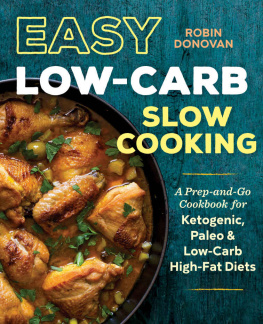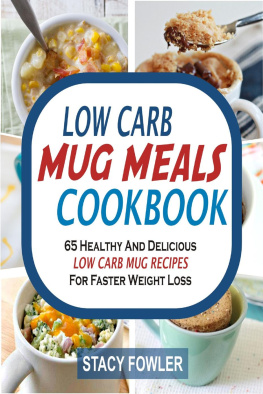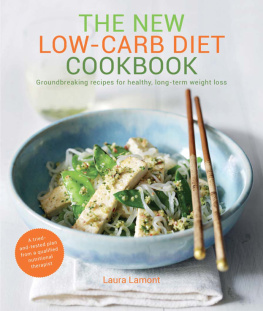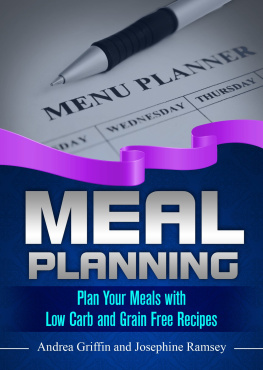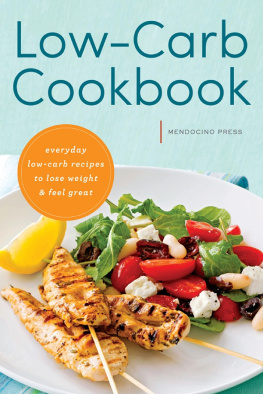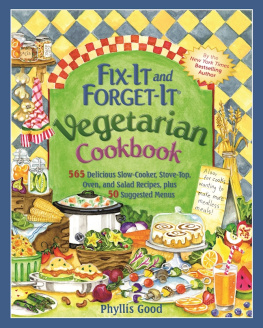LOW-CARB
VEGETARIAN
Margo DeMello

2004 Margo DeMello
Cover design: Warren Jefferson
Interior design: Gwynelle Dismukes/ Cynthia Holzapfel
All rights reserved. No portion of this book may be reproduced by any means whatsoever, except for brief quotations in reviews, without written permission from the publisher.
Book Publishing Company
P.O. Box 99, Summertown, TN 38483
1-888-260-8458
Printed in Canada
ISBN13 978-1-57067-167-8 ISBN10 1-57067-167-2
12 11 10 09 08 07 7 6 5 4 3 2
Library of Congress Cataloging-in-Publication Data
DeMello, Margo.
Low-carb vegetarian / by Margo DeMello.
p. cm.
Includes bibliographical references and index.
ISBN 1-57067-167-2
1. Vegetarian cookery. 2. Low-carbohydrate diet--Recipes. I. Title.
TX837.D36 2004
641.5636dc22 2004012139
Book Publishing Co. is a member of Green Press Initiative. We chose to print this title on paper with postconsumer recycled content and processed chlorine free, which saved the following natural resources:

For more information visit: < www.greenpressinitiative.org > Savings calculations thanks to the Environmental Defense Paper Calculator at < www.papercalculator.org >
Table of Contents
Thanks to
My husband, Tom Young, for supporting me in every way;
My parents, Bill DeMello and Robin Montgomery; my sister, Vicki DeMello; and my sister-in-law, Merah Chung, for sending me recipes;
Kate Turlington and her colleagues at PETA for testing my recipes;
Anita Carswell, Carla Brauer, Erin Williams, Andy Page and Karen Courtemanche for testing my food;
Martin Rowe at Lantern for recommending my publisher;
Bob and Cynthia Holzapfel for taking a chance on me.
Why a Low-Carb Vegetarian Cookbook?
Americans are obsessed with weightand for good reason. Americans are among the fattest individuals in the industrialized world, with more than 130 million overweight or obese adults in 2001, along with 8.8 million overweight children. According to the Centers for Disease Control and Prevention, up to 64% of all adult Americans are overweight and 30% of children are also overweight. The diet and nutrition industry is likewise enormous, bringing in profits of over forty million dollars per year, with an expected growth rate of 5.8% per year.
Today, the biggest trend in the diet industry and among dieters is an emphasis on eating a limited amount of carbohydrates, popularized by the Atkins diet, the South Beach diet, Carbohydrate Addicts, and the Zone. All of these espouse, to greater or lesser degrees, reducing or eliminating many carbohydrates from the diet, particularly starchy, grain-based carbohydrates. While the Atkins diet in particular is very controversial due to its reliance on high-fat, animal-based proteins such as meat, butter, and cheese, and its almost religious avoidance of almost all carbohydrates, numerous studies have shown that curbing carbohydrates (and especially highly processed carbohydrates) can be an effective weight loss method, and, when done correctly, can promote a healthful way of eating.
Low-carb cookbooks are one of the largest growing adjuncts of this industry, with hundreds of cookbooks geared to both devotees of the popular low-carb diets as well as to customers who simply want to cut down on their carbohydrate intake. Yet not a single one of these cookbooks is geared to vegetarians or to those who are trying to eat less meat.
Many vegetarians, just like meat eaters, are plagued with weight problems. And many vegetarians eat an unhealthful diet based on white flour, sugar, fried foods, and fast food snacks. Just like meat eaters, these vegetarians need to be more nutrition conscious, and many find that the typical low-fat vegetarian cookbook is too rigid or doesnt work for them.
If youre like mehaving battled with my weight for all of my adult lifeand are attracted to low-carb diets but dont want to eat the animal products most of those diets are based on, you need recipes and meal plans that are not only meatless, but are based on principles from diets like the Zone or South Beach.
This cookbook is for you.
Low-Carb Vegetarian uses only the best principles from low-carb diets to create nutritious, easy, compassionate, and yummy recipes for anyonevegetarian or otherwisewho wants to lose weight. The principles are simple: highly processed and carbohydrate-rich foods such as those made with white flour and sugar can increase the appetite, lead to cravings, encourage weight gain, and even promote the incidence of type 2 diabetes. Eliminating or reducing such bad carbs as white bread, white rice, white pasta, sugar, fruit juices, and potatoes, while increasing the consumption of vegetables, fruit, soy products, and whole grains, can promote not only short-term weight loss but long-term weight loss and overall health.
I cant promise that you will magically lose dozens of pounds by making the recipes in this book. But I can tell you that if you create a meal plan and diet for yourself based on the principles outlined here, you will feel good about yourself, youll be eating a diet thats rich in fiber, soy protein, vegetables, and fruits, and you will most likely lose weight. I know I did.
It is estimated that approximately 24 million Americans are now on some kind of lowcarb diet program, according to a 2003 survey by Opinion Dynamics Corporation.
A Look at Low-Carb Diets
Not all low-carb diets are the same. Some require you to eat a diet based almost entirely on meat products, with carbohydrate counts as low as six grams per meal. For others, the proportion of calories from carbohydrates, proteins, and fats is emphasized. And for still others, carbohydrates only matter at certain times of the day or during certain meals. How do you figure out how to sort through all of the diets and their often conflicting rules? And how do you create a dietary plan that works for you and is nutritious, not too confusing, and will be successful as a long-term eating plan? To help you decide whether a low-carb plan will work for you, well start by looking at some of the low-carb diets popular today and the philosophy and science behind them.
THE LOW-CARB PHILOSOPHY
Low-carb diets differ from traditional diets popular in the United States in that low-carb diets restrict carbohydrates rather than fat or calories. The reason for the focus on carbs rather than calories or fat has to do with the effect that carbohydrates have on the way the body processes sugar.
Simply put, carbohydrates are broken down into glucose during digestion and are released into the bloodstream for fuel. After we eat carbohydrates, our blood glucose (or blood sugar) level rises, giving us a burst of energy. The pancreas, as a reaction to that rise, releases insulin into the bloodstream that allows the sugars to be used by the body. Muscles, fat and other body cells then absorb this insulin, and insulin levels in the blood return to normal.
If a food contains a large quantity of carbohydrates, it can cause a rapid increase in blood sugar, placing a greater burden on the insulin system. (High-density carbohydrate foods such as breads or cereals contain more carbohydrates than low-density carbohydrate foods such as vegetables.) When the body experiences a rapid rise in blood sugar followed by a surge in insulin, the increased insulin blocks the bodys ability to burn stored fuel, causing the body to convert it into fat. This condition is known as insulin resistancewhen insulin can no longer properly process fuelcausing the body to store more fat than it should and resulting in weight gain. Further, a rapid rise in blood sugar is always followed by a rapid fall, causing energy levels to drop, concentration to waver, and hunger to increase. Consequently, we crave more carbohydrates to give ourselves another sugar rush, and the cycle continues. Decreasing the consumption of these high-density carbohydrates improves insulin resistance and leads to weight loss rather than fat storage.


